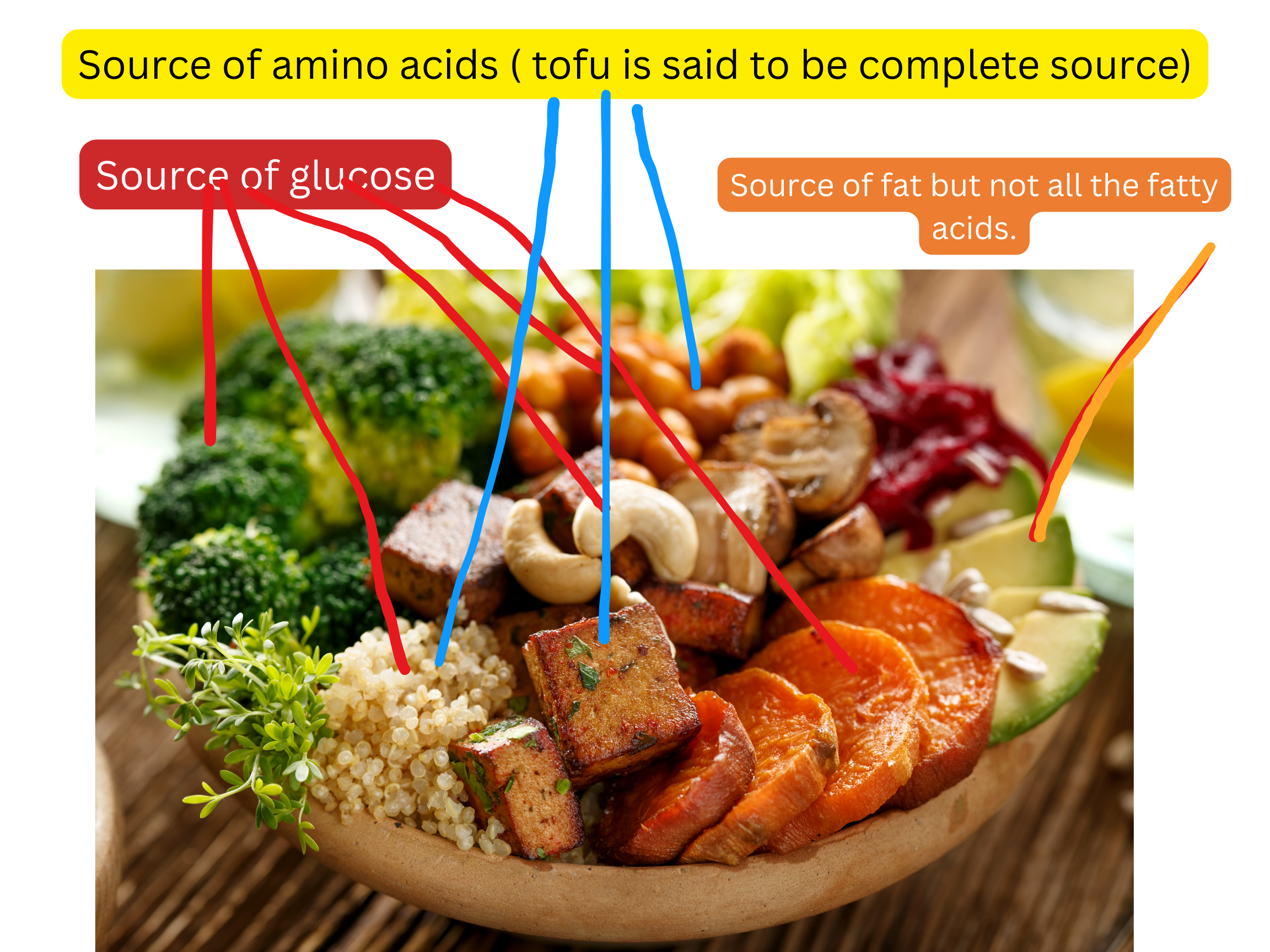Have you been using the word sugars – and think that this mean something to you.
Ok, How much sugar do you consume in that last meal.
None, you say, because you had rice, peas and a little piece of chicken. Think Again!
Glucose Is Glucose: The Truth About Sugar, Diet, and Your Body
When it comes to glucose, most of us have been taught to think in terms of “good” or “bad” sources of sugar. But here’s the hard truth: a molecule of glucose absorbed into the villi from the small intestine is just that—a molecule of glucose. Whether it comes from fruit, soda, bread, or corn, the body doesn’t care. Similarly, a molecule of fructose is the same, regardless of whether it comes from a sugary drink or an apple. The real difference isn’t in the structure of the molecule, but how much makes it through the intestinal wall—think of this as your body’s ‘immigration control.’
Fiber: The Body’s Traffic Cop
When you consume fruit, you’re also getting fiber—a built-in traffic cop that slows down the absorption of glucose and fructose. Only a small amount gets absorbed in the first part of your small intestine, while the rest is dragged along toward the large intestine. This slow release means your liver can handle the glucose load at a reasonable pace.
Now, compare that to soda or sugary drinks. They come without the fiber buffer, allowing a flood of glucose and fructose to hit your liver all at once. It’s like opening the floodgates. The liver has to act quickly to process this deluge of sugar, putting it in shock mode. Of course, the liver adapts, and life goes on. But over time, as this process repeats, small health issues start to creep up. The body can only compensate for so long.
The Illusion of ‘Healthy’ Diets
Years down the line, you might start noticing those subtle aches and pains, those minor health issues that seemed to come out of nowhere. You switch to a ‘healthy’ diet, perhaps plant-based, maybe even with oats and fruit in the morning. On the surface, it seems like you’ve made a positive change. But here’s the kicker: you’re still consuming glucose and fructose. Sure, you’re getting smaller doses, but it’s the same thing wrapped in a different package.
Lifestyle Matters More Than You Think
Take the person who has been eating oats for 60 years and claims nothing’s wrong with them. But look deeper at their life. This person wakes up, makes oats with full-fat cow’s milk (not the low-fat plant-based kind), throws in some berries, and maybe even adds a dash of salt and butter. What’s the difference here? Well, the fat from the milk slows digestion in the stomach, which prevents a rapid glucose spike—unlike plant-based ‘milks’ that often lack fats.
Then, there’s the activity factor. This person might be physically active, doing hard labor throughout the day. When you’re active, your muscles use glucose directly, without the need for an insulin spike. Plus, being out in the sun, sweating it out, helps deplete the body’s glucose stores, allowing the liver to burn fat for energy. This natural balance means that even though they’re consuming glucose, their body is using it efficiently.
What about you? Are you spending hours sitting with little physical activity and minimal exposure to sunlight? If that’s the case, your body isn’t processing glucose in the same way, leading to long-term metabolic issues.
The Cinnamon Factor
Oh, and let’s not forget the real cinnamon they might be sprinkling into their oats—a spice known to help lower blood glucose spikes. But this isn’t the processed, “smells-like-cinnamon” stuff you find in pre-packaged products. Real cinnamon has real benefits. So while oats might work for some, it’s not just about the oats—it’s about the fats, the activity level, and the quality of the ingredients.
It’s Time to Wake Up
The takeaway? Glucose is glucose. The problem isn’t just the source but how it’s absorbed and how your lifestyle influences how your body handles it. Whether it’s from fruit, soda, or oats, glucose and fructose is going to be processed by the liver, but the difference lies in your overall diet, activity level, and habits.
It’s time to wake up and see the bigger picture. Don’t get fooled into thinking a “healthy” diet alone will save you. Look at your entire lifestyle—the foods you eat, the way you move, and how you live every day. Only then will you truly understand how your body handles sugar and what you can do to maintain long-term health.
So next time you’re tempted by that “healthy” plant-based meal, remember: it’s not just about what you eat, but how your body processes it.

